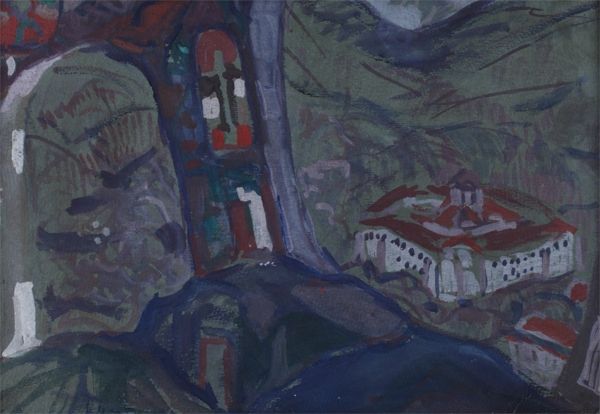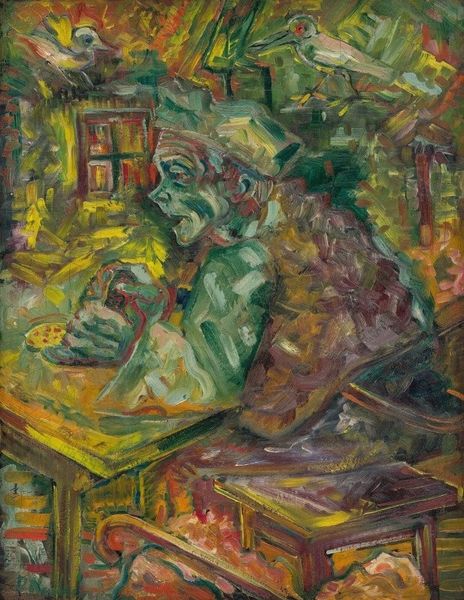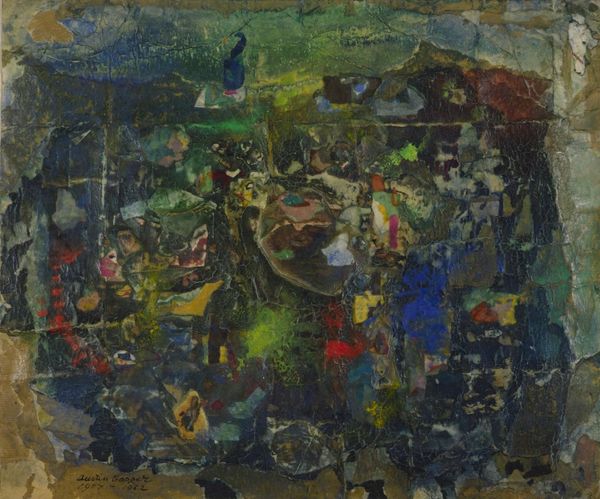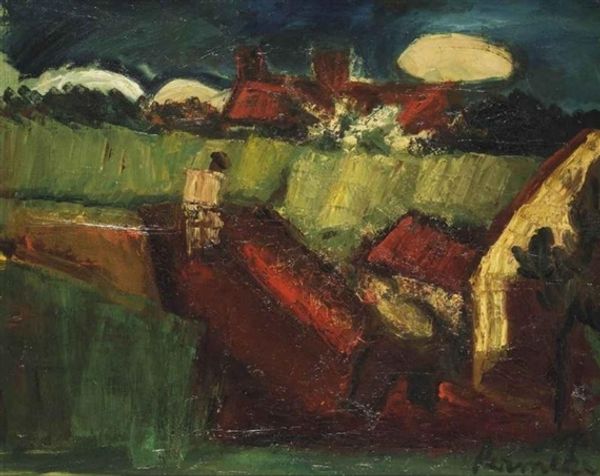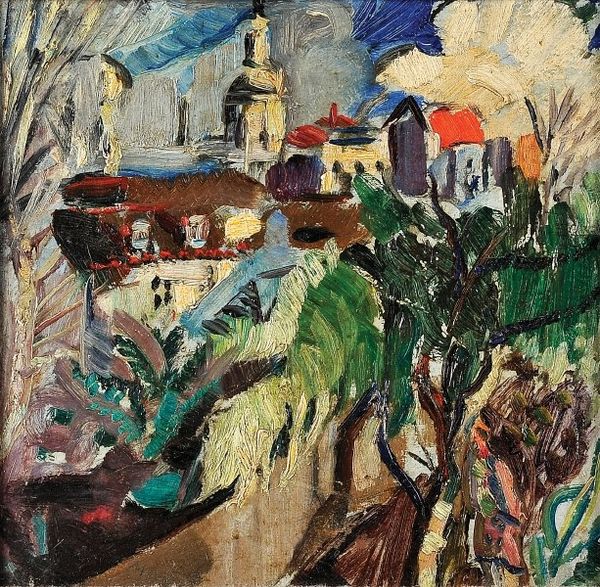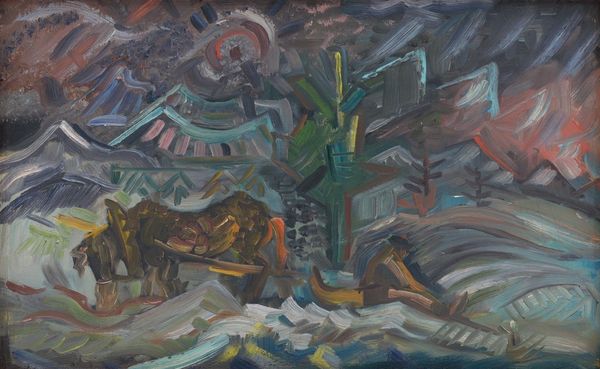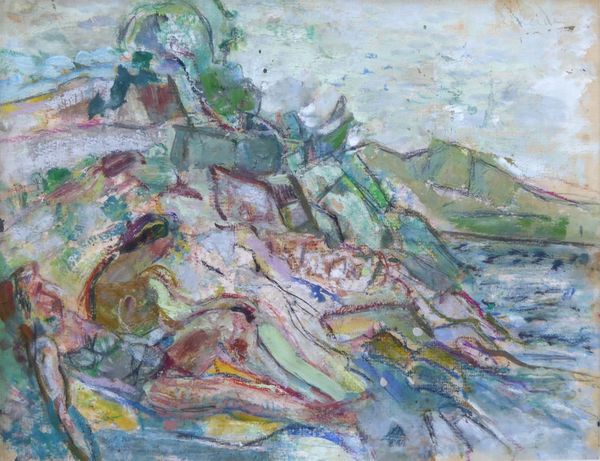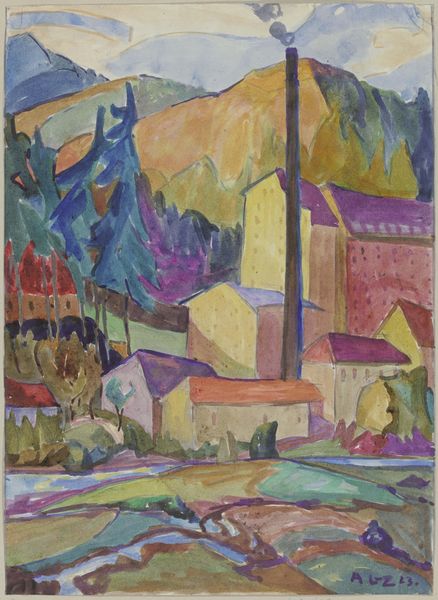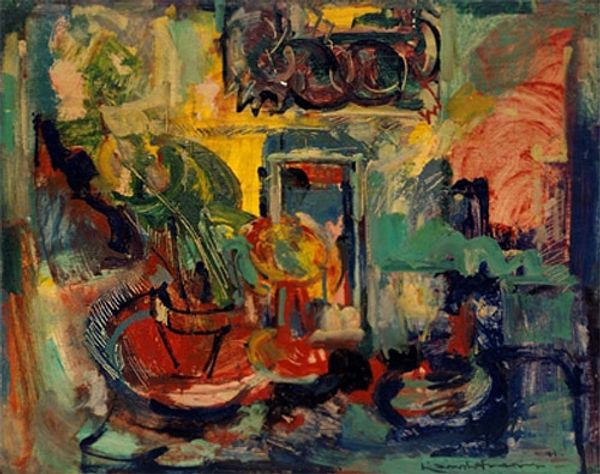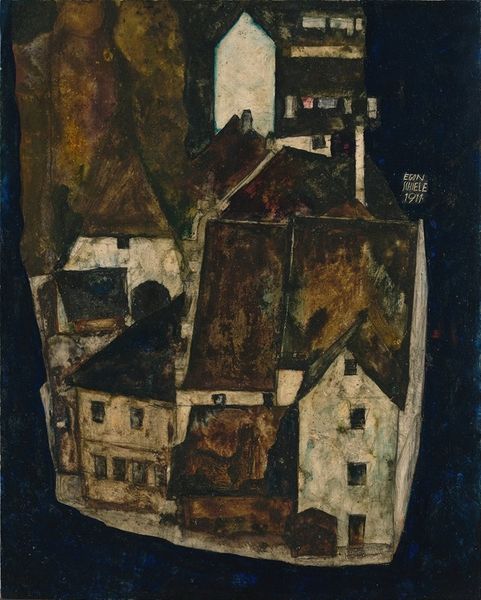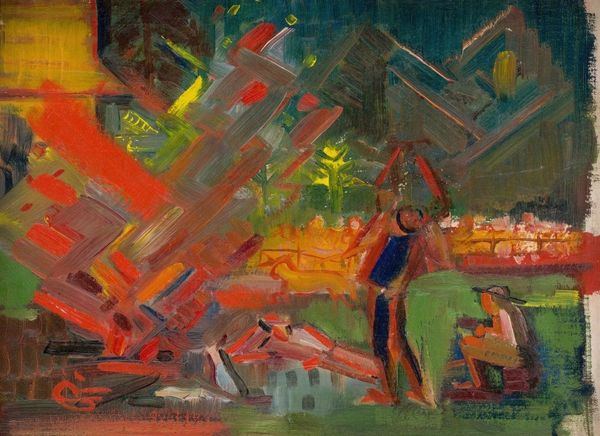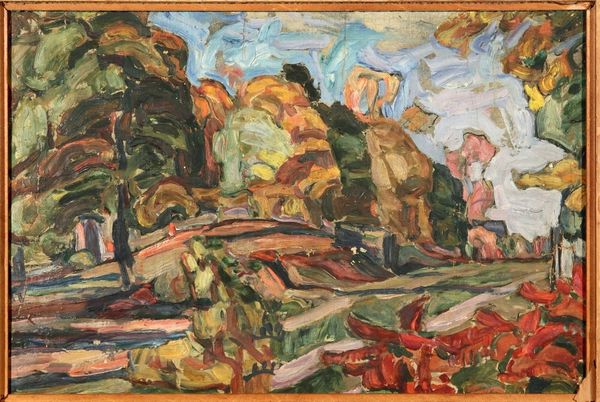
oil-paint, impasto
#
abstract-expressionism
#
abstract expressionism
#
oil-paint
#
landscape
#
oil painting
#
impasto
#
expressionism
Copyright: Michel Kikoine,Fair Use
Curator: Welcome. We are looking at a painting entitled "Landscape" by Michel Kikoine. It’s a particularly striking piece done in what appears to be oil paint with a heavy impasto technique. What is your immediate impression? Editor: I'm struck by how textured it is, you can almost feel the weight of the oil on the canvas. And there's a real tension between the bright, almost naive depiction of the buildings and the gloom that seems to pervade the scene. Curator: Absolutely. Kikoine’s engagement with Expressionism gives him space to manipulate not just form and color, but emotional affect too. We should consider how the urban landscape emerges at a particular time in art history with increasingly industrial and political complexity. Editor: You can really see that conflict play out through the materiality, can't you? Thick applications of oil become almost sculptural, battling with each other across the surface. The method itself really seems to become the message, reflecting the pressures inherent in rapid social change. Curator: The canvas really becomes a stage, playing out these social antagonisms. I'm fascinated by his depiction of light – or perhaps, its absence. It suggests the uneasy transition between day and night. This aligns him with a generation that views modernity with great suspicion and deep reservation. Editor: It’s certainly evocative! Looking at the heavy brushstrokes, one can imagine Kikoine grappling with the materiality of paint itself, working through these concerns in the studio. Perhaps there's a feeling that even our method of expression—our tools of production, in effect—are somehow inadequate. Curator: Kikoine, working within the framework of the 'landscape,' reveals a more profound exploration of early 20th-century urban alienation and the burden of modernization that colors the period. The lack of definition creates a feeling of displacement that mirrors this historical reality. Editor: Yes, and perhaps his technique gives us insight into how his perspective and working life directly informed the art's final appearance. The very texture and medium serve to communicate both his feelings and his vision in physical terms. Curator: Well, I see this work as part of a broader cultural movement that reflects and refracts the major social shifts of the early 20th century, while also capturing the artist’s individual anxieties about such development. Editor: An idea echoed not only in the image presented before us but its physical reality as well.
Comments
No comments
Be the first to comment and join the conversation on the ultimate creative platform.
